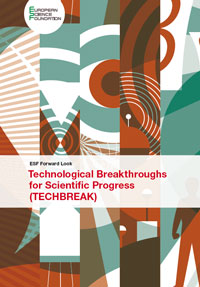| Jul 10, 2014 | |
New report flags up non-space breakthroughs that could enable future space missions |
|
(Nanowerk News) The European Science Foundation (ESF) has released a new report on 'Technological breakthroughs for scientific progress'. While the sector is known to be a key driver of society-benefiting innovation, both ESF and the European Space Agency are banking on part of its future lying in non-space technologies.
 It is no secret that investment in space is a priority in Europe. The ESA and national space agencies have a total annual budget of over EUR 9 billion, whereas some EUR 1.5 billion will be spent in space research under Horizon 2020. A questionable investment? That would be ignoring the fact; for instance, that the United States' GPS was originally designed as a military surveillance system. Now, everyone can access localisation services from a car or a smartphone and the GPS market is expected to be worth USD 26.67 billion (EUR 19.62 billion) by 2016. The same goes for many technologies originally developed for the space sector but ultimately benefiting society as a whole. In the face of increasingly complex challenges, however, the space sector will need to think outside of the box. And as two (or more) heads are better than one, it might as well cast an eye over innovations in other sectors and seek partnerships. The ESF report, entitled Technological Breakthroughs for Scientific Progress (TECHBREAK), looks into five challenges or 'overwhelming drivers' the sector is currently facing: reducing mass while maintaining stiffness, building spacecrafts that can last over 50 years, deploying a 30m+ telescope into space, achieving an autonomous geophysical survey of planets and enabling humans to remain in space for over two years - and eventually reach Mars. The report is a result of the joint ESF-ESA 'TECHBREAK' project, the goals of which were to forecast the development of such breakthrough technologies in order to enable novel space missions in the 2030-2050 timeframe and to identify valuable partnerships through synergies with non-space specialists. |
|
| Over its 116 pages, the report identifies the current status of research in various domains and flags up innovations to keep an eye on, based on the EU's concept of 'key enabling technologies' (KETs). These include current research in the likes of robotics, hibernation, synthetic life, photovoltaics, flexible electronics, nanomaterials, 3D printing and water purification technologies. | |
| For the European Space Agency, keeping in touch with developments in these areas with appropriate communication channels and further expanding their potential use through joint programmes could be key to meeting the sector's challenges, the ESF concludes. |
| Source: Cordis |
